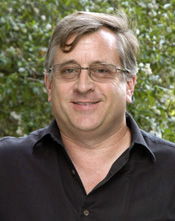A spate of huge earthquakes in the past seven years has provided humbling lessons for seismologists, according to Thorne Lay, professor of Earth and planetary sciences at UC Santa Cruz. In a commentary for the March 8 issue of Nature marking the one-year anniversary of the devastating Tohoku earthquake and tsunami in Japan, Lay reviewed the questions raised and lessons learned from this and other powerful recent earthquakes.
"If you are under the impression that there have been an unusual number of horrific earthquakes of late, often contradicting scientific expectations, you are correct," he wrote.
Since December 2004, there have been five earthquakes of magnitude 8.5 or greater. Almost all of these events have violated some theories of where and when great earthquakes can occur and what their consequences can be, Lay said. "Unfortunately, we often advance our understanding of earthquakes through bitter experience. But progress is being made," he wrote.
Armed with new observations and better arrays of instruments to monitor activity in fault zones, scientists are improving their ability to assess the risk of large earthquakes in specific regions. Currently, major efforts are under way to evaluate the potential for a great earthquake off the coast of Oregon and Washington, where a magnitude-9 earthquake last struck in 1700.
"Although individual great earthquakes are still sure to surprise us, the most important shift in our thinking has already occurred: we must allow for the possibility of larger earthquakes in regions where we thought that potential did not exist," Lay wrote. "That is one difficult lesson we can consider learned."



